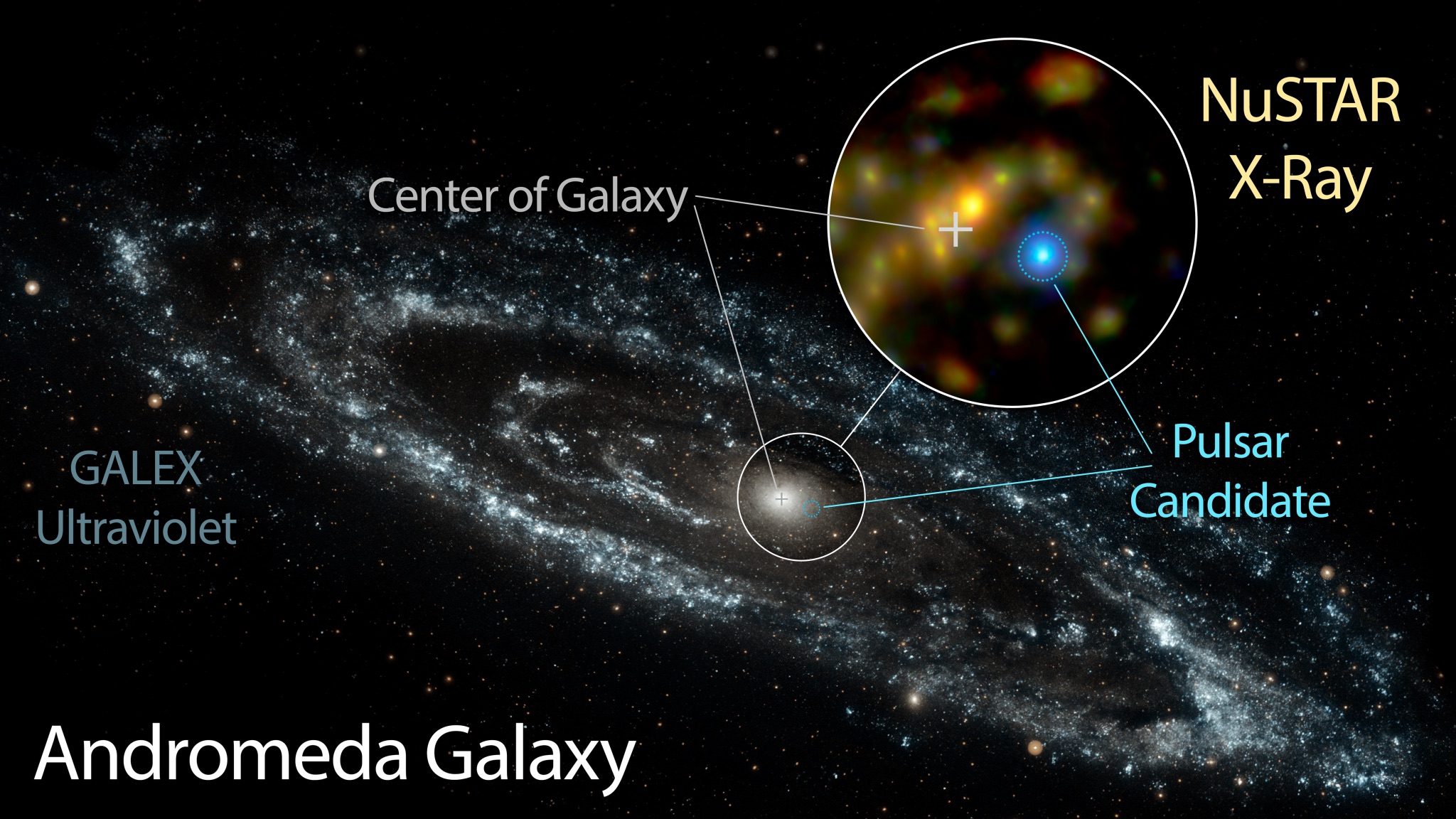Neighbor Galaxy Has a Secret: Andromeda Hosts Massive Pulsar

Researchers have cracked a secret of the Milky Way's neighboring Andromeda galaxy: A mysterious X-ray source is likely a pulsar, the rapidly spinning corpse of a massive star.
The researchers unmasked the strange source in Andromeda, which sits "only" 2 million light-years away, using data from NASA's Nuclear Spectroscopic Telescope Array (NuSTAR), a space-based telescope sensitive to high-energy X-rays.
NuSTAR was able to pinpoint the source of the X-ray emission: an object called Swift J0042.6+4112, first cataloged by NASA's Swift satellite. The X-ray source is brighter than anything else in the galaxy at that wavelength, and the spectrum of light it releases looks a lot like pulsars in the Milky Way.
This pulsar is actually brighter in high-energy, shorter wavelength X-rays than all of Andromeda's black holes combined. "We didn't know what it was until we looked at it with NuSTAR," Mihoko Yukita, a postdoctoral researcher at Johns Hopkins and lead author of the study about the pulsar, said in a statement.
Pulsars are very dense — as a type of neutron star, they can pack a mass three times that of the sun into a space only a few miles across. The researchers think the pulsar is part of a binary system, in which a star orbiting the pulsar loses matter to the pulsar, which gets heated as it falls and emits energy as X-rays.
Galaxies like the Milky Way, and Andromeda, have supermassive black holes at their centers, and matter falling into the galactic core generates X-rays as it gets heated to high temperatures. But that didn't explain the emission from Andromeda. Its powerful X-ray source was originally picked up in the 1970s, by the orbiting Einstein Observatory, though nobody knew what it was. Later, the Chandra X-ray Observatory detected it as well, as did European Space Agency's XMM-Newton. Those satellites, though, saw the lower-energy end of Swift J0042.6+4112's X-ray emissions. It took the observations of NuSTAR and additional data from Swift to show that those emissions all came from the same object — a pulsar.
The study appeared in the Astrophysical Journal on March 22.
Get the Space.com Newsletter
Breaking space news, the latest updates on rocket launches, skywatching events and more!
You can follow SPACE.com on Twitter @Spacedotcom. We're also on Facebook & Google+.
Join our Space Forums to keep talking space on the latest missions, night sky and more! And if you have a news tip, correction or comment, let us know at: community@space.com.

Jesse Emspak is a freelance journalist who has contributed to several publications, including Space.com, Scientific American, New Scientist, Smithsonian.com and Undark. He focuses on physics and cool technologies but has been known to write about the odder stories of human health and science as it relates to culture. Jesse has a Master of Arts from the University of California, Berkeley School of Journalism, and a Bachelor of Arts from the University of Rochester. Jesse spent years covering finance and cut his teeth at local newspapers, working local politics and police beats. Jesse likes to stay active and holds a fourth degree black belt in Karate, which just means he now knows how much he has to learn and the importance of good teaching.









